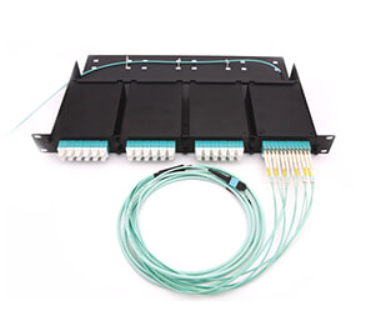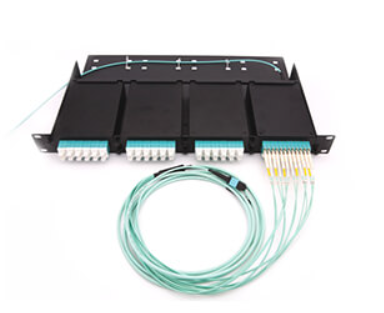News
Site Editor
 Site
https://leonetworkgroup.usa18.wondercdn.com/uploads/image/5fe152faa587d.png
If your business requires a robust network that can cover long distances, high speeds, and heavy bandwidth connections, fiber optic cables are the indisputable best choice. To discover why IT professionals tasked with installing networks prefer fiber to copper, it’s important to understand the differences between the two options. Fiber optic cables can provide the following crucial services to new or upgraded networks in today’s high-speed world.
Site
https://leonetworkgroup.usa18.wondercdn.com/uploads/image/5fe152faa587d.png
If your business requires a robust network that can cover long distances, high speeds, and heavy bandwidth connections, fiber optic cables are the indisputable best choice. To discover why IT professionals tasked with installing networks prefer fiber to copper, it’s important to understand the differences between the two options. Fiber optic cables can provide the following crucial services to new or upgraded networks in today’s high-speed world.
5 Reasons Why IT Professionals Choose Fiber Optic Cables
Views: 1845
Author: Site Editor
Publish Time: 2021-09-06
Origin: Site
If your business requires a robust network that can cover long distances, high speeds, and heavy bandwidth connections, fiber optic cables are the indisputable best choice. To discover why IT professionals tasked with installing networks prefer fiber to copper, it’s important to understand the differences between the two options. Fiber optic cables can provide the following crucial services to new or upgraded networks in today’s high-speed world.
What is Fiber Optic Internet?
Fiber optic internet is a data connection carried by a cable filled with thin glass or plastic fibers. Data travels through them as beams of light pulsed in a pattern. Fiber optic internet speeds are about 20 times faster than regular cable at 1 Gbps.
Why is fiber optic cable internet so much better than plain ol’ cable internet? Because there’s no copper wire to gum up the works. Cable internet sends its signals down metal wires. The metal heats up, weakening the signal and picking up interference. That’s why cable and DSL internet are so much slower and clumsier than fiber optics.

How Fiber Optic Internet Works
Fiber optic internet works by splitting files like movies and games into data packets of zeroes and ones. A laser flashes this Morse code-type signal into one end of a plastic or glass filament. The “wire” is about as thick as one strand of human hair.
A special sheath called a cladding keeps the beam of light inside the filament. It bounces off the walls for as far as 60 miles and pops out the other end where a modem decodes the light into a form your computer can use.
1. Fiber Optic Transmission is Faster
The standard way to measure data transmission rates is via bandwidth. These days, it is measured in gigabits of data per second (Gbps), or even terabits per second (Tbps).
Copper-based transmissions currently max out at 40 Gbps, whereas fiber optics can carry data at close to the speed of light. In fact, the bandwidth limits imposed on fiber are primarily theoretical, but have been tested to be measurable in hundreds of terabits per second.
2. Fiber Optic Cables Cover Greater Distances
Fiber optic cables are the better choice if you need to send a signal over greater distances. Copper cables can only carry signals about 100 meters, while some singlemode fiber optic cables can carry more data up to 25 miles. Fiber optic cable also carries data with less attenuation or signal loss—only about three percent every 100 meters—than copper, which loses over 90 percent over the same distance.
3. Fiber Optic Cables Are Impervious to Electromagnetic Interference
The electrical signaling in a copper network connection can generate a field of interference around the cables. Then, when you have multiple cables running near one another, this interference can bleed into nearby cables, which can hinder the desired messaging. This is “crosstalk” and can pose security risks or force expensive retransmissions of the message.
The light transmission in fiber optics does not generate any of this electromagnetic interference, so fiber becomes more secure and requires less retransmission, which saves you costs in the future.

4. Fiber Withstands Water and Temperature Fluctuations
Fiber optic cable isn’t impacted by temperature changes, bad weather or moisture. For example, if it comes into contact with rainwater, communication goes on as usual. If lightning strikes a fiber cable, the surge of electricity will not be propagated because the fiber cable doesn’t contain any metallic components.
It can withstand harsh environments without any changes in performance, making it ideal for rugged environments like outdoor, long-distance and industrial applications.
5. Fiber is Inherently Secure
Fiber cables don’t emit signals; connecting taps to a fiber cable to intercept data transmission is incredibly difficult.
Because the signal traveling through a fiber cable is contained inside the individual fiber strand, it must be accessed from the end of the cable by cutting into it. In most cases, this would take the network down, and everyone would quickly become aware of the issue.
If you want to know more about industrial network cabinet,china fiber optic splice closure,china fiber optic distribution box,please consult the fiber optic splice closure factory





